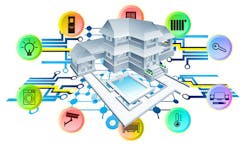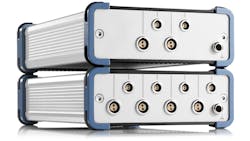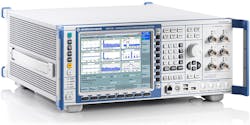Installation of billions of Internet of Things (IoT) devices in homes, factories, and offices worldwide indicate the growing popularity of this extremely practical technology. It provides the means by which wireless transceivers connect many different sensors to the internet for remote control of other electronic equipment. For example, it allows you to connect to a heater or air conditioner to adjust the temperature of a family room, using a cellphone as a controller from some distance.
Often these IoT sensors are “set and forget” devices intended to run for long times on small batteries at low voltages and currents. Of course, lasting a long time on one battery or a single set of miniature batteries is a sign of an IoT device with low power consumption.
Certainly, this should be part of every IoT device intended for remote sensing and control. It can be established at the IoT product design stage through careful planning, and with the assistance of measurement strategies that can reveal a design’s power-consumption characteristics. This requires a set of measurements that accurately characterizes an IoT device’s power consumption under its different operating modes, and the type of test equipment that can replicate the IoT device’s actual operating conditions at extremely low levels of voltage and current.
1. A “smart” house uses multiple IoT devices to monitor and remotely control power.
IoT technology is enabling many different types of “smart” environments, such as smart offices and smart homes, where light, heat, and power can be controlled by remote wireless access to the Internet (Fig. 1). A typical IoT device contains one or more sensors, a microprocessor, and a radio chip that can send and receive signals at some standard operating voltage, such as +3.0 to +3.5 V dc. However, it can also wait in a standby mode for an activating signal from a user checking on the IoT device with a cellphone.
Furthermore, that device may be functioning at +0.5 V dc or less in a kind of sleep mode to save power, especially for long-duration, remote-monitoring applications where a battery’s power must be maintained. Some remote-monitoring applications, for example, may require that an IoT device remain powered by its battery for 20 years or more, and achieving extremely low power consumption is critical for these devices.
Many IoT devices are virtually systems in themselves, capable of measuring current and power at low voltages with high accuracy, often across multiple measurement channels. Devices like the miniature MCP39F511N from Microchip Technology enable instantaneous power monitoring on two channels with high precision.
Even though the MCP39F511N fits in a compact QFN housing, it contains an internal voltage reference and internal crystal clock for timing accuracy. As with many IoT devices, it has many different operating modes, running on a typical voltage of +3.6 V dc when performing measurements but dropping to as low as +0.7 V dc as a starting voltage to awaken from a sleep mode.
Determining the power consumption of this particular device and of many IoT devices requires the capability to measure the current/power use across its different operating voltages. The test equipment must provide the means of not only duplicating the same range of input signals to be measured by an IoT device—across the same wide dynamic range, whether those signals are sound, light, video, or more—but it must provide a power supply that meets the specified range of the IoT device under test, from sleep mode to fully active operating mode. Whether an IoT device is powered by internal or external battery, or an electronic system’s external supply, a measurement solution for determining the IoT device’s power consumption must support a power-supply range from millivolts to several volts or more.
Finding a Test Solution
Any measurement solution for characterizing IoT device power consumption needs to be able to measure a wide dynamic range of current levels, which may extend from nanoamps to several amps. It also has to do so with the current draw possibly changing almost instantly as the IoT device changes operating modes, such as being triggered awake to full operating mode from a sleep mode.
The load current of an IoT device in its sleep mode will determine the lower current measurement limit required for any test solution, whether it’s an ammeter, multimeter, oscilloscope, voltmeter, or other form of instrument. The low current levels of some IoT designs in sleep mode may simply be beyond the measurement limit of most instruments, especially when high measurement accuracy, say ±0.5%, is needed at those low current levels. A suitable measurement solution for the low and changing current levels of IoT devices should provide a high signal-to-noise ratio (SNR) and fast response time.
In contrast, an IoT device’s load current/power consumption may be at its greatest when it is in the process of using its wireless-communications radio circuitry, as in transferring sensor data to a user’s cell phone. The changes in power consumption of a device can occur within microseconds, as the radio is activated. This requires a measurement approach that provides suitable response times and sampling rates to measure whatever aberrations occur during the changes of IoT operating modes.
For a digital current/voltage measuring instrument such as an oscilloscope, characterizing IoT devices with fast transitions between current consumption levels dictates the use of an instrument with faster sampling rate but also wide bandwidth. That’s because insufficient bandwidth doesn’t provide enough measurement resolution to reliably determine the IoT’s current and voltage levels during its different operating nodes.
Sample Test Solutions
2. The R&S RT-ZVC02/04 multichannel power probes enable wide-dynamic-range measurements of current and voltage (power) on IoT devices.
The wide current and voltage dynamic range needed for measuring IoT power consumption narrows the choice of measurement instruments that can perform such analysis. Still, commercial solutions are available, such as the R&S RT-ZVC02 and R&S RT-ZVC04 multichannel power probes from Rohde & Schwarz (Fig. 2). The former provides two voltage and current measurement channels while the latter has four voltage and current measurement channels. The dynamic range is extremely wide, with a current measurement range of 4.5 μA to 10 A and voltage measurement range of ±15 V. Both feature high resolution (18 b) and fast sampling rate (5 Msamples/s) to capture the fine details of changing power levels within an IoT device under test.
3. The R&S CMW500/290/270 Radio Communications Tester makes it possible to analyze the power consumption of an IoT device while it’s operating under network-connected conditions.
For additional measurement capability, the R&S CMW500/290/270 Radio Communications Tester (Fig. 3) equipped with the appropriate (R&S CMWrun) software makes it possible to perform measurements of IoT power consumption while connected to network-like conditions. Therefore, automated testing of power consumption can be performed under any number of different operating conditions.
About the Author
Jack Browne
Contributing Editor
Jack Browne, Technical Contributor, has worked in technical publishing for over 30 years. He managed the content and production of three technical journals while at the American Institute of Physics, including Medical Physics and the Journal of Vacuum Science & Technology. He has been a Publisher and Editor for Penton Media, started the firm’s Wireless Symposium & Exhibition trade show in 1993, and currently serves as Technical Contributor for that company's Microwaves & RF magazine. Browne, who holds a BS in Mathematics from City College of New York and BA degrees in English and Philosophy from Fordham University, is a member of the IEEE.




